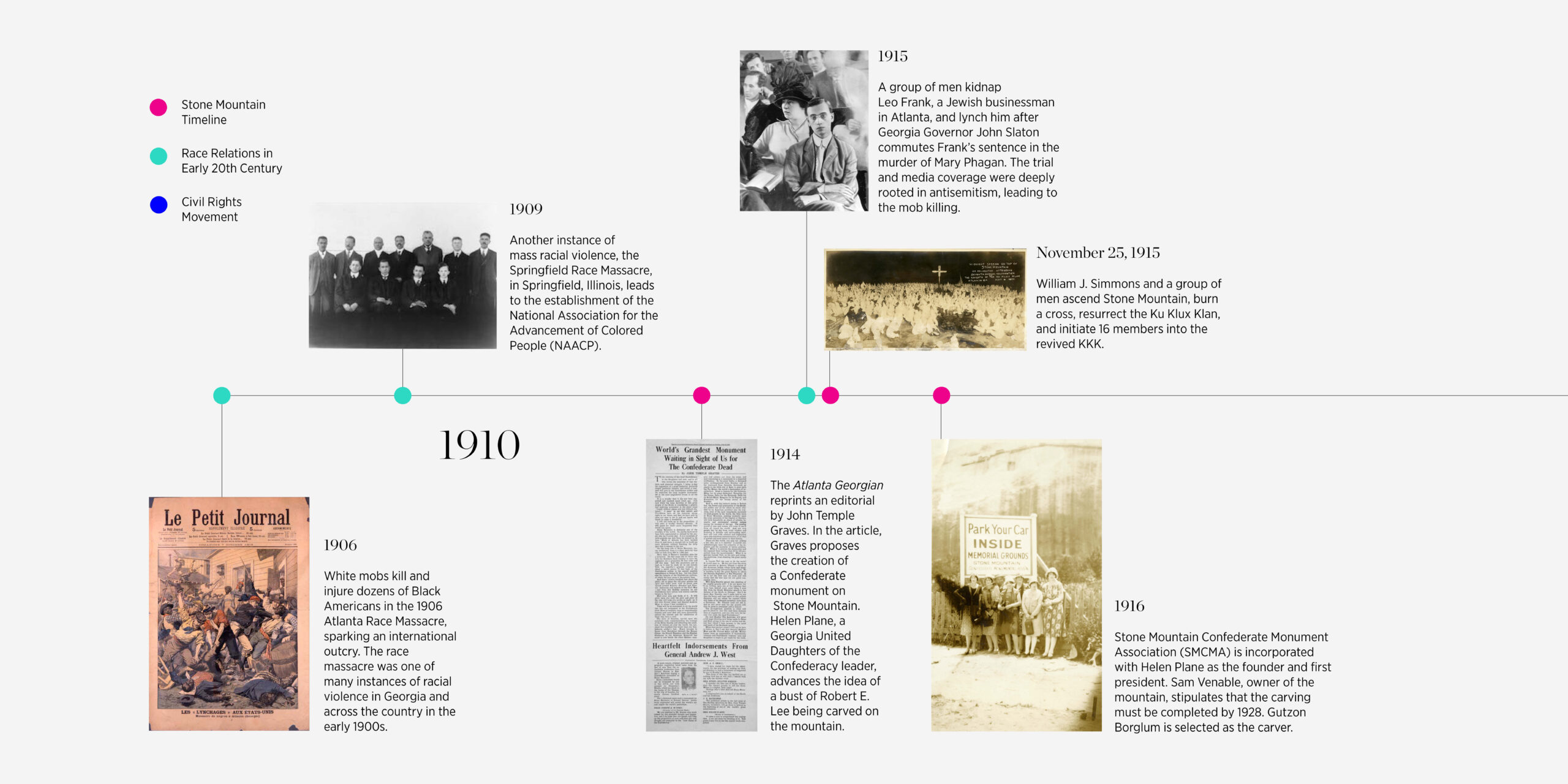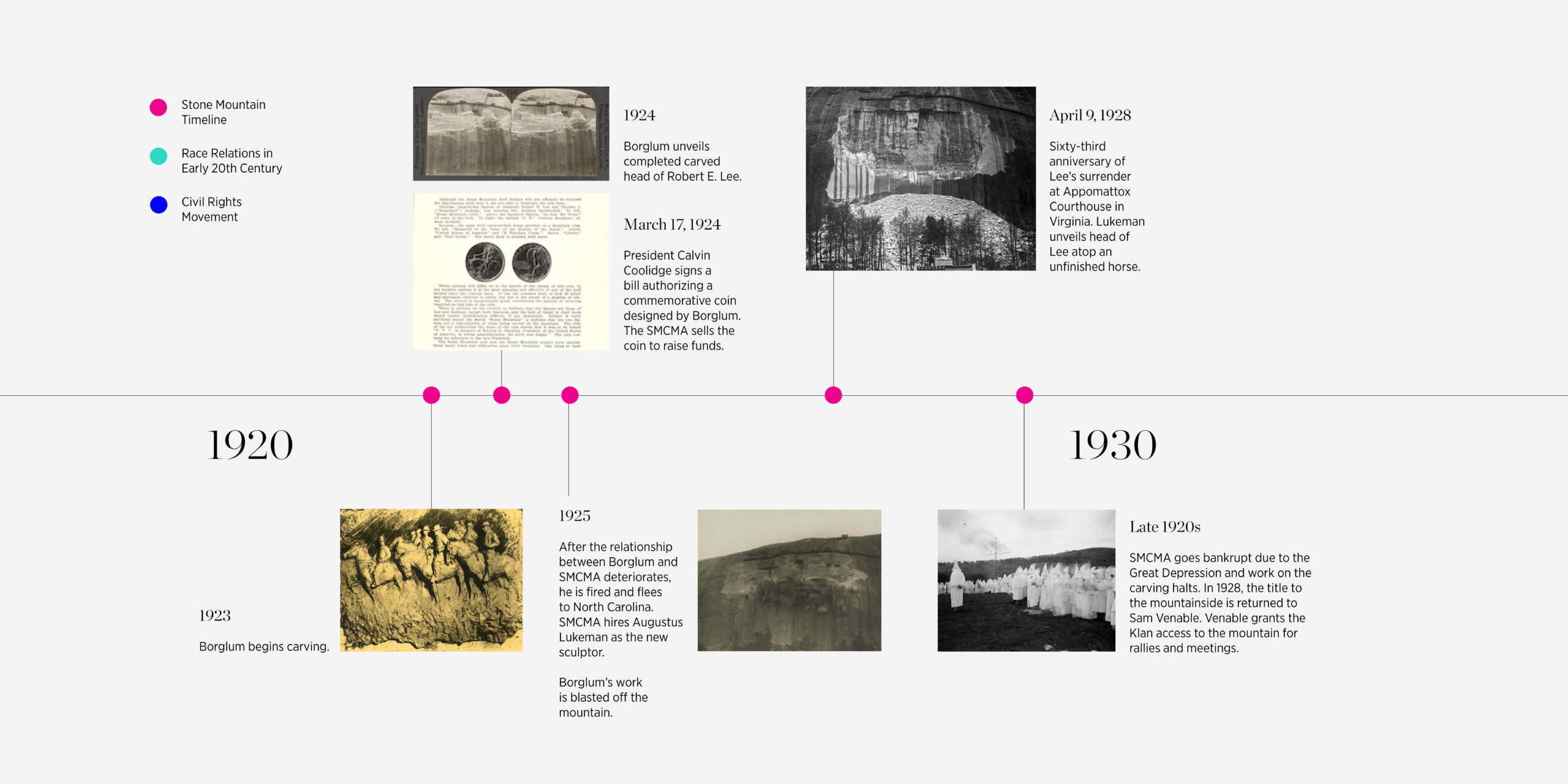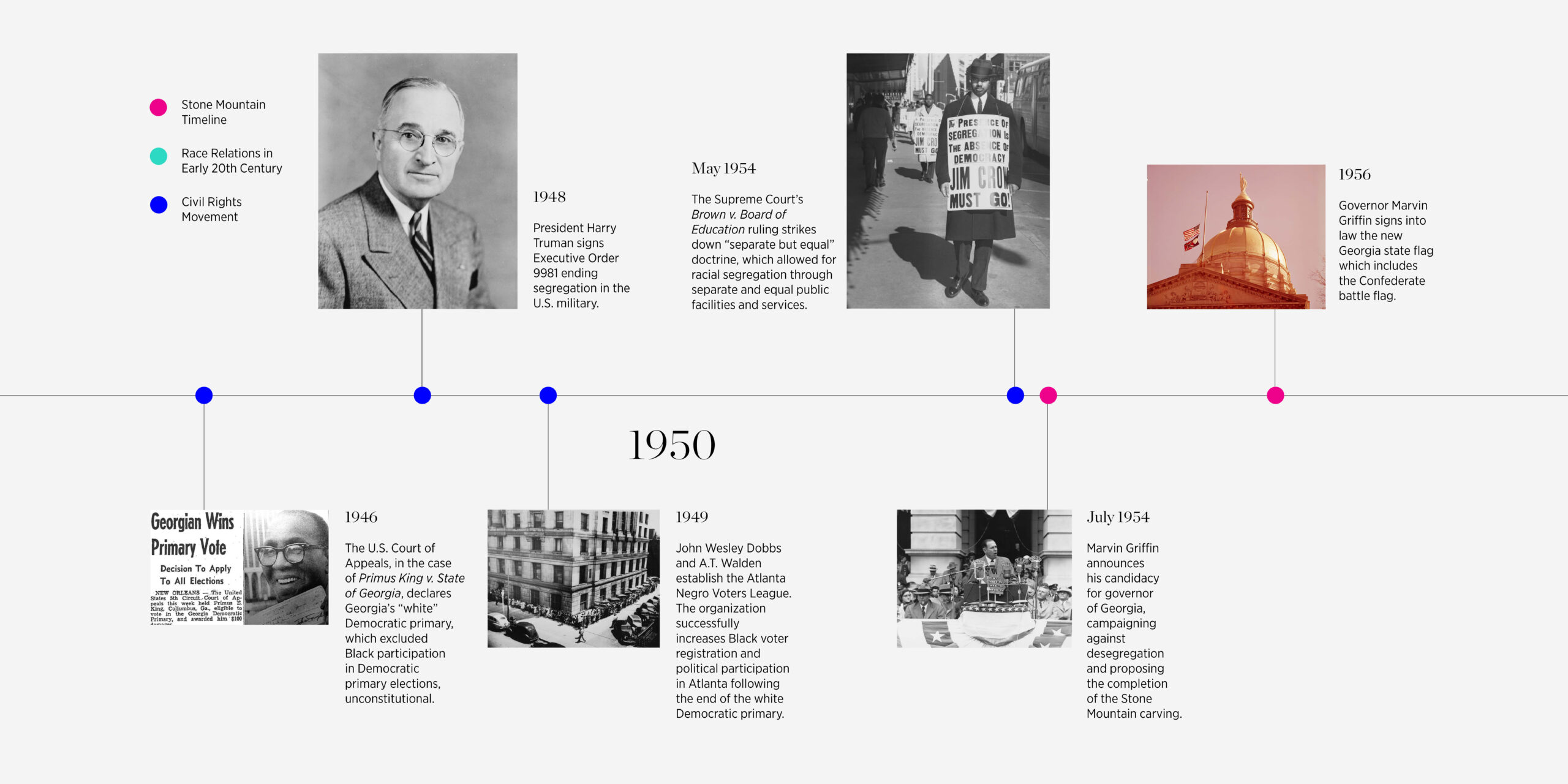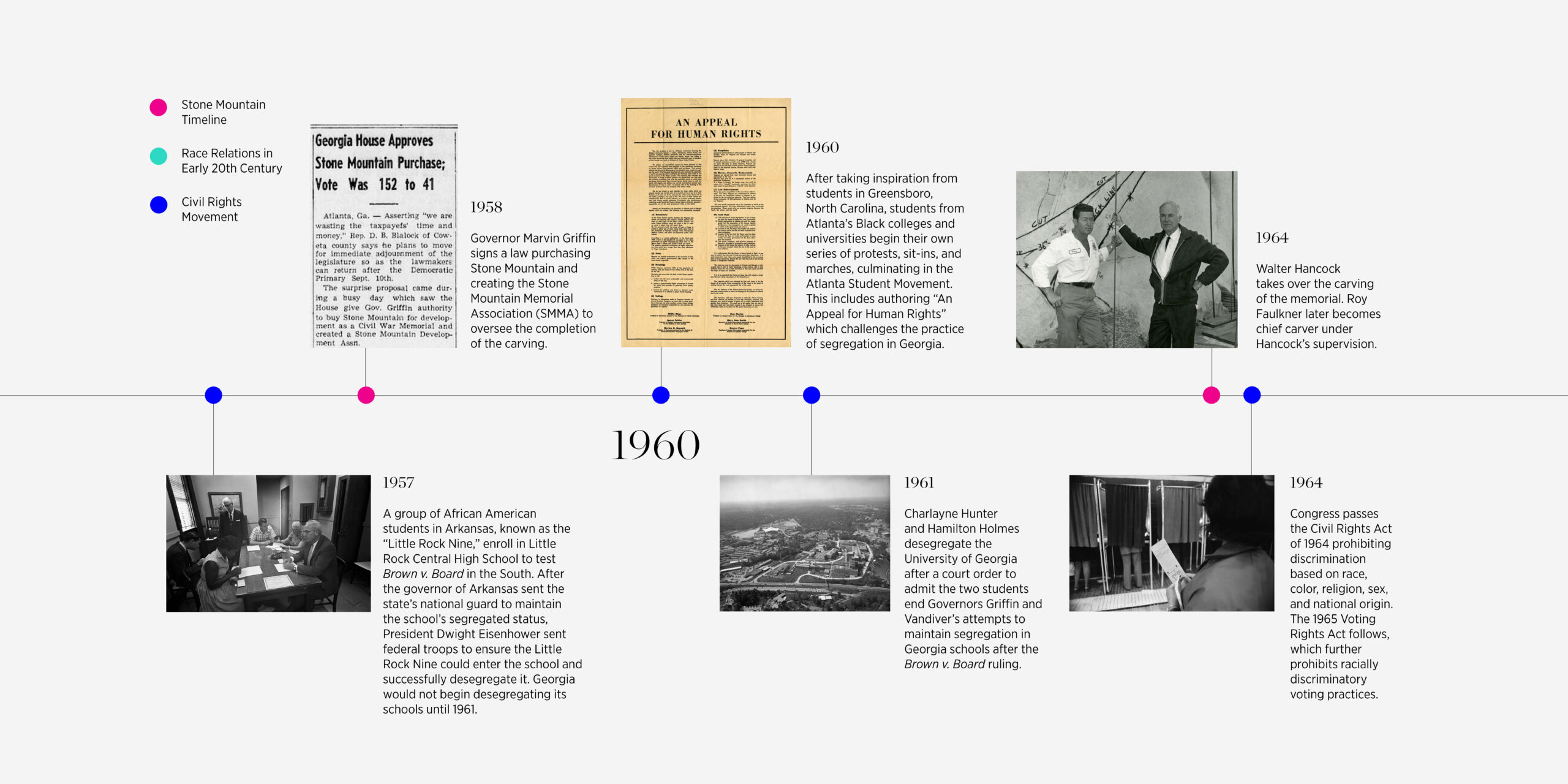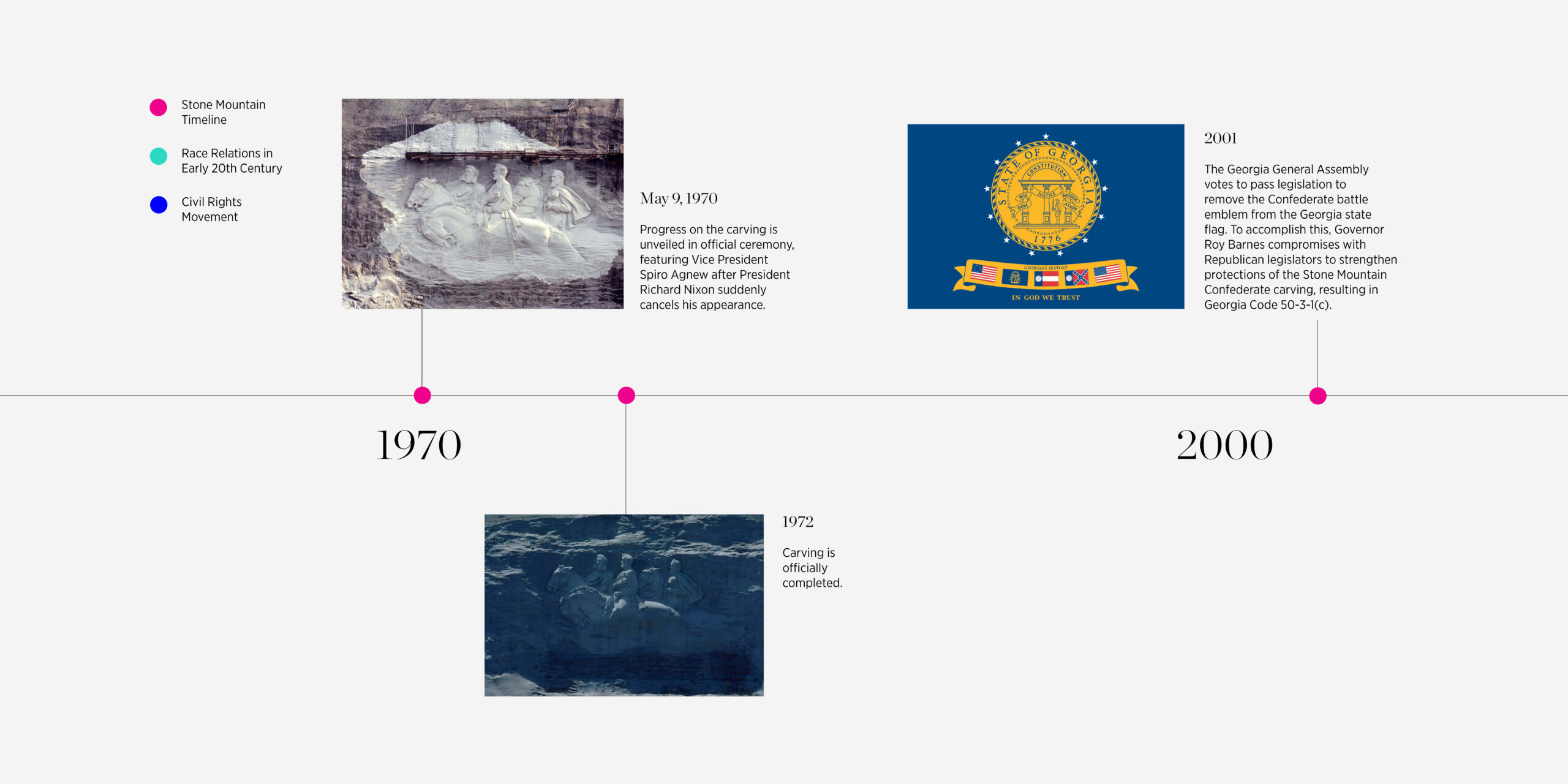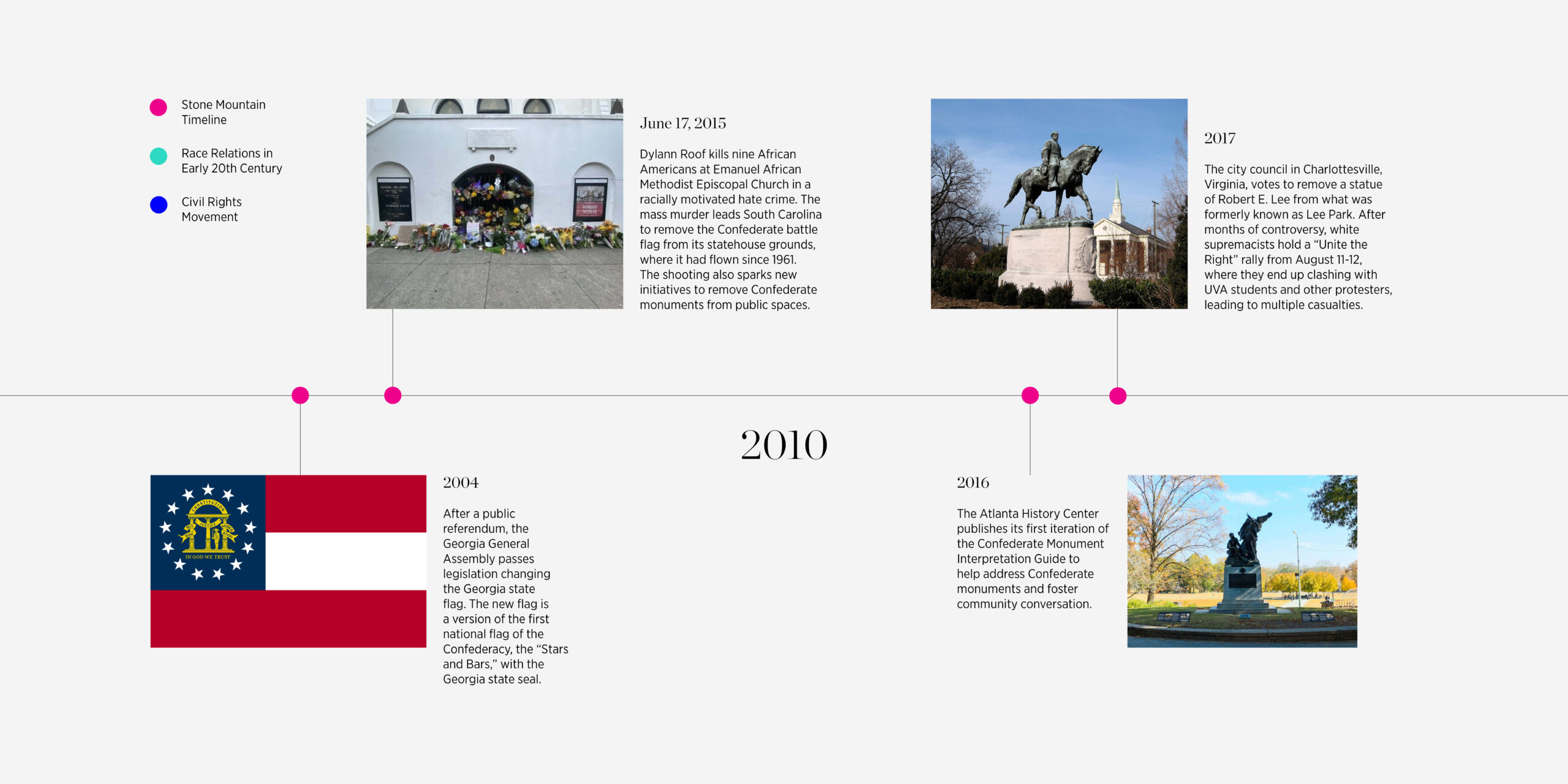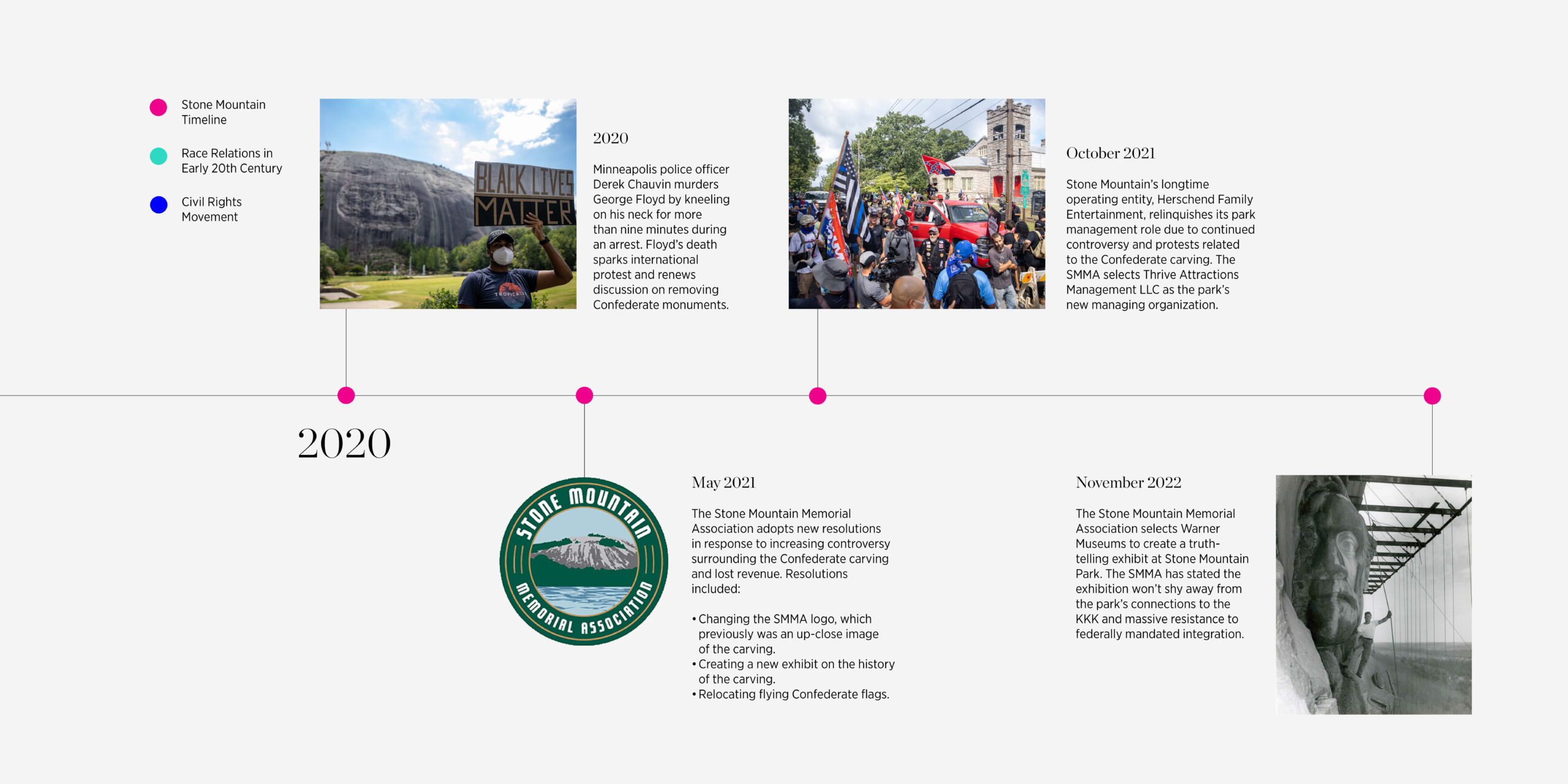Monument: The Untold Story of Stone Mountain
Classroom lesson plans empower educators to facilitate conversations among their students on topics like Georgia history, state and local government, and the impact monuments have on society. Lesson plans and accompanying resources are supported by historical research, designed for middle and high school students, and aligned to Georgia Standards of Excellence.
Lesson plans include clips of the Monument documentary. These clips are designed to supplement educational content in the plans and activities. Educators are encouraged to view the documentary in its entirety to gain a full understanding of the carving and its context.
Lesson Plans. Resources.
Monument. Timeline.
Related Content. Learn More.
-
Story
The Birth of a Nation’s success and wide distribution increased national interest in the post-Civil War Klan. In Atlanta, the film served as an inspiration and a guide for the leaders of two early 20th-century Atlanta organizations with close connections to Stone Mountain—the modern Ku Klux Klan and the United Daughters of the Confederacy.
-
Story
John Temple Graves was a New South orator, newspaper editor, and political figure, known for his influence on racial issues in the late 19th and early 20th century. His newspaper, the Atlanta Georgian, played a significant role in inflaming racial tensions that led to the 1906 Atlanta Race Massacre. He was also one of the earliest proponents of carving the likeness of Robert E. Lee into the side of Stone Mountain as a memorial to the Confederacy.
-
Story
How did the world’s largest Confederate monument end up outside of Atlanta? What should be done, if anything, with it? With these questions in mind, Atlanta History Center explores the controversial history through online resources and an upcoming documentary.


